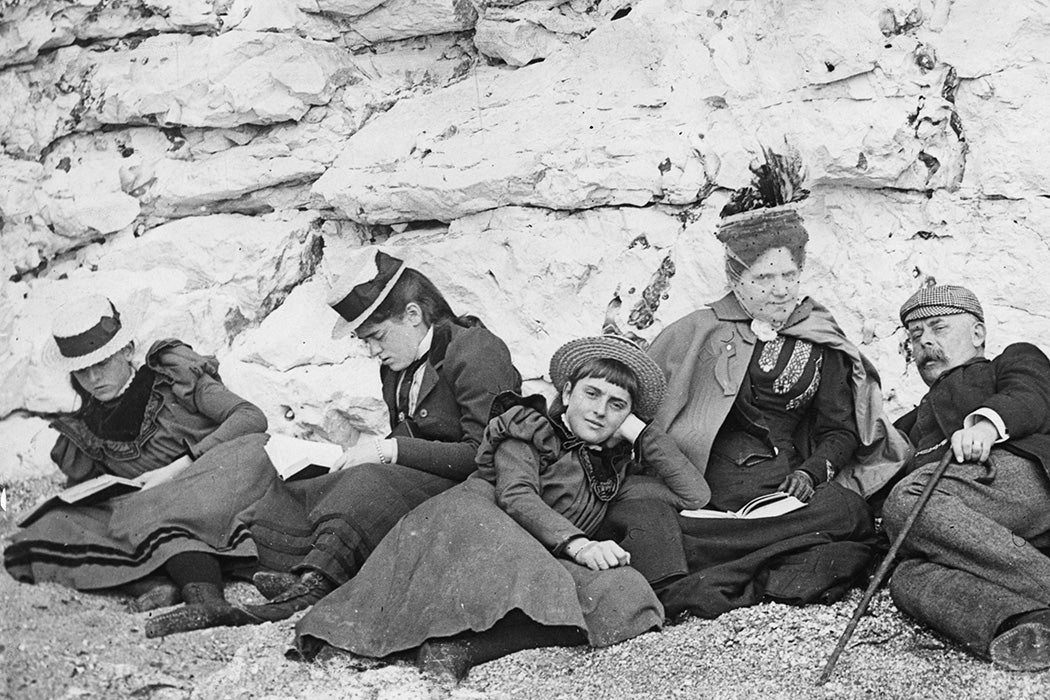It’s the season for flopping on the beach with a romance novel or tucking a thriller into your carry-on bag. As English and Communications scholar Donna Harrington-Lueker writes, light reading has been associated with summer vacations for a long time.
In the early 1800s, Harrington-Lueker writes, many well-to-do Americans began taking time off in the summer to travel by railroad or steamship to picturesque destinations like Niagara Falls or the Catskills. Within a century, the middle and even working classes were increasingly enjoying summer travel, even if it was just a day trip to the beach.
It didn’t take long for publishers to see an opportunity. In 1853, Boston’s Ticknor, Reed & Fields published A Book for the Sea-Side, a collection of ocean-themed poetry featuring work by Lord Alfred Tennyson, William Wordsworth, and others. In 1872, the Book Buyer, a trade journal from the Charles Scribner publishing house, ran its first ads for books explicitly labeled “summer reading.” Among the beach reads of the 1870s was Scribner’s own Bric-A-Brac series, gossipy stories about famous authors. In 1876, the Book Buyer reported that “‘Have you seen the new Bric-A-Brac’ was as common a question at Newport and Saratoga as ‘Shall you be at the hop [dance] tonight?’”
Soon, Harrington-Lueker reports, each summer brought a flurry of novels that were both literally and figuratively lightweight. An 1885 ad in the Book Buyer touted “Summer Books in Paper Covers,” including humorous fairy tale-like stories by Frank R. Stockton and early science fiction by Fitz James O’Brien. An 1899 review saw the value of these books in that they could be “taken up and laid down without fear of losing the trend of anything in it” and were “calculated to keep on in good humour under almost any circumstance.”
Not everyone was pleased with the rise of frivolous summer reading, however. Brooklyn preacher Rev. T. DeWitt Talmage warned in an 1876 sermon that paperback romance novels were “literary poison.” “Do not let the frogs and the lice of a corrupt printing press jump and crawl into your Saratoga trunk or White Mountain valise,” he counseled.
But the industry leapt to the defense of summer reads. “[A]fter all,” the Book Buyer editorialized in 1887, “the cakes and ale of literature have their legitimate time and place after the more solid intellectual dishes of the past season have been digested.”
Weekly Newsletter
Harrington-Lueker writes that light reading went hand-in-hand with a season of rest and rejuvenation, and it might be particularly welcome in tough times. An 1885 magazine column noted that the year’s crop of summer novels was “peculiarly trivial” but suggested this might be because publishers had anticipated unusually high rates of cholera and believed “that the general mind will be so far distraught by anxiety as to have no attention to spare for being critical.”
So, depending on what kind of year you’ve been having, there’s plenty of historical precedent for taking a break and treating yourself to the cakes and ale of literature.







